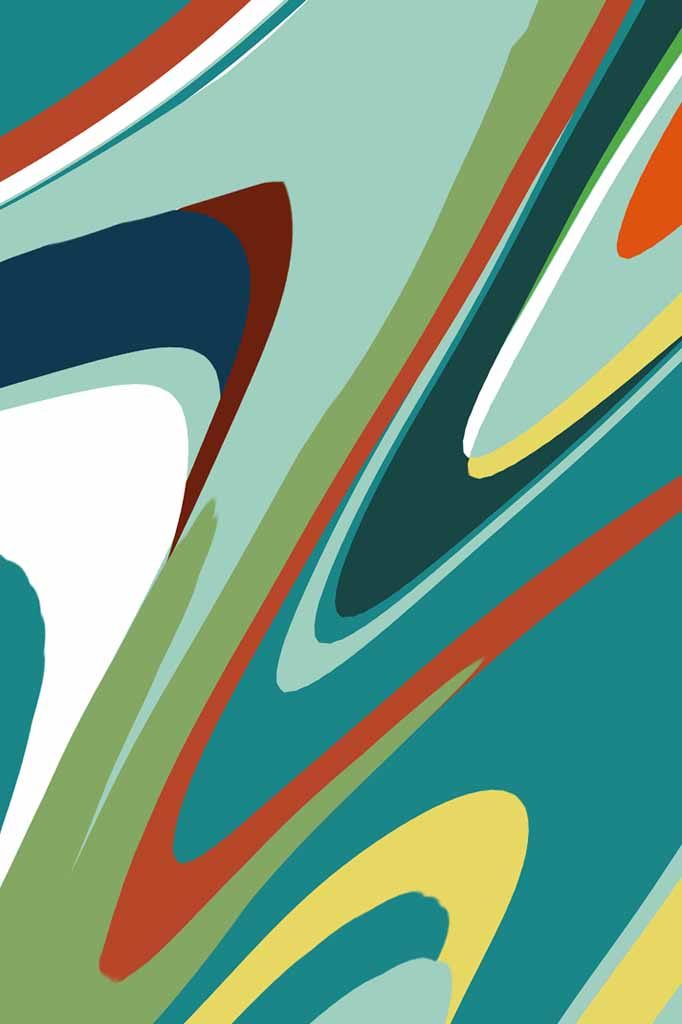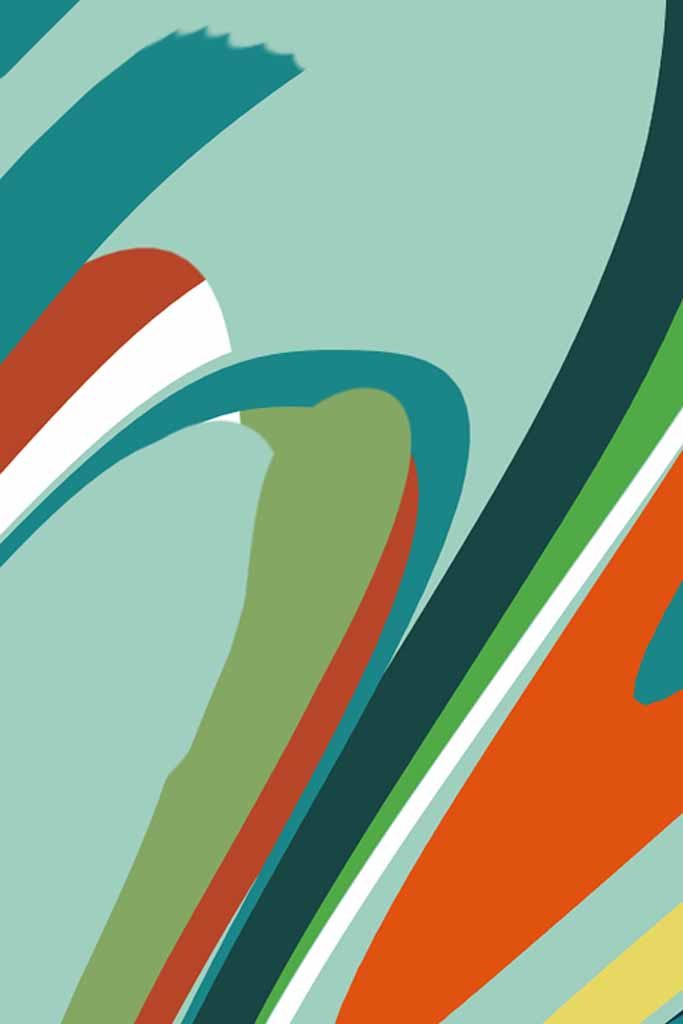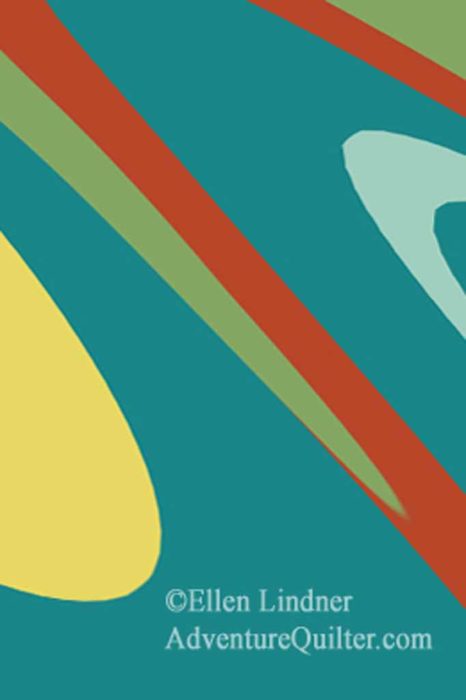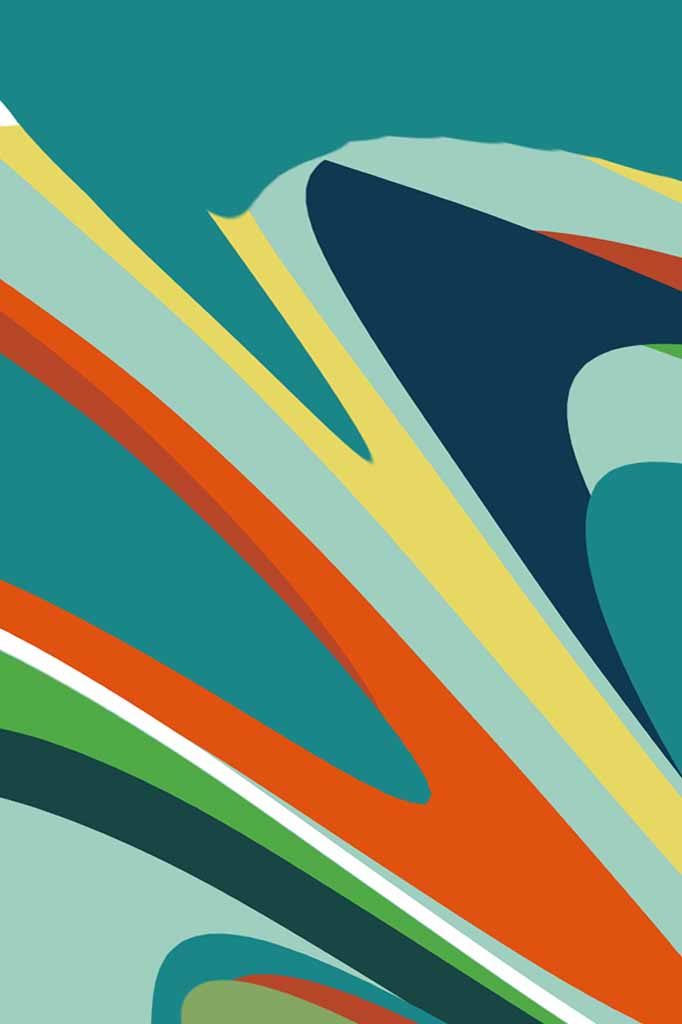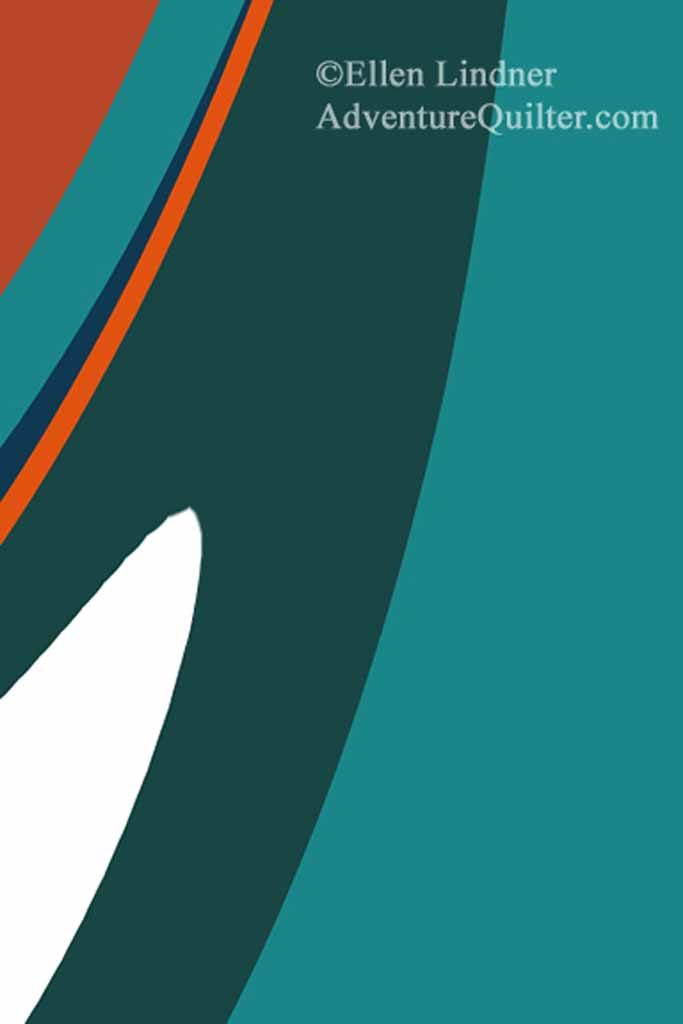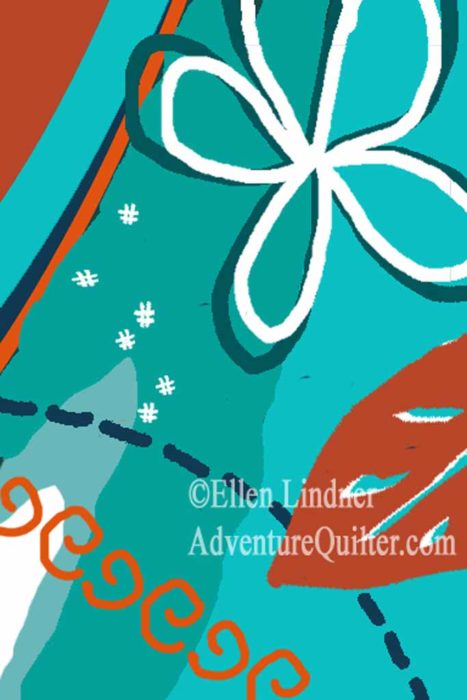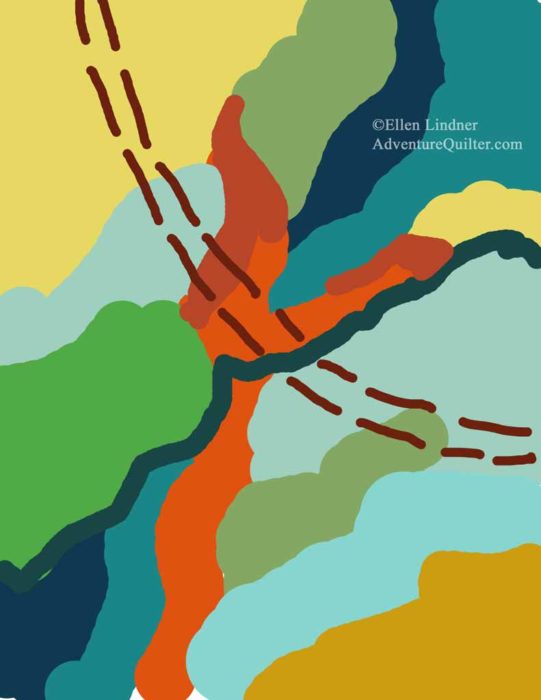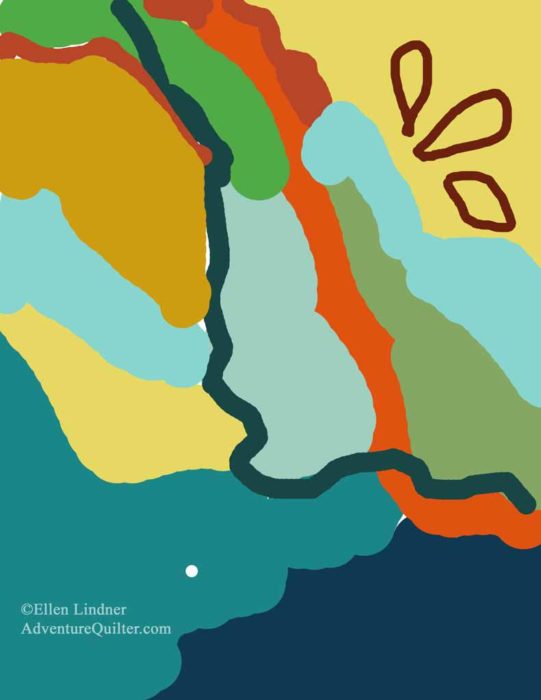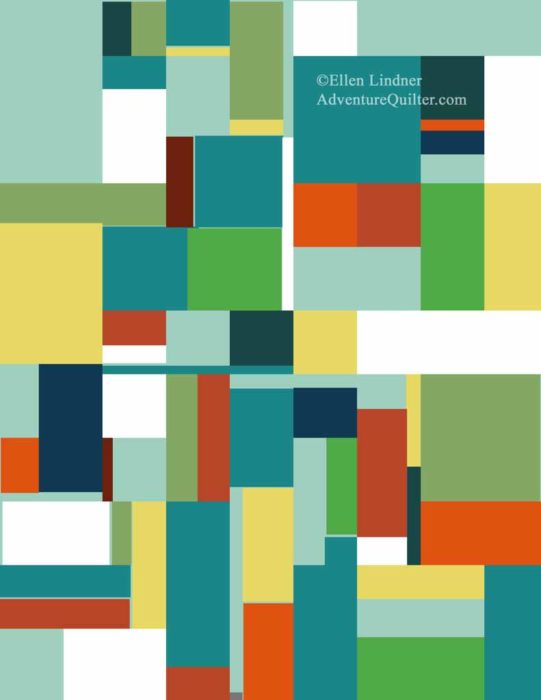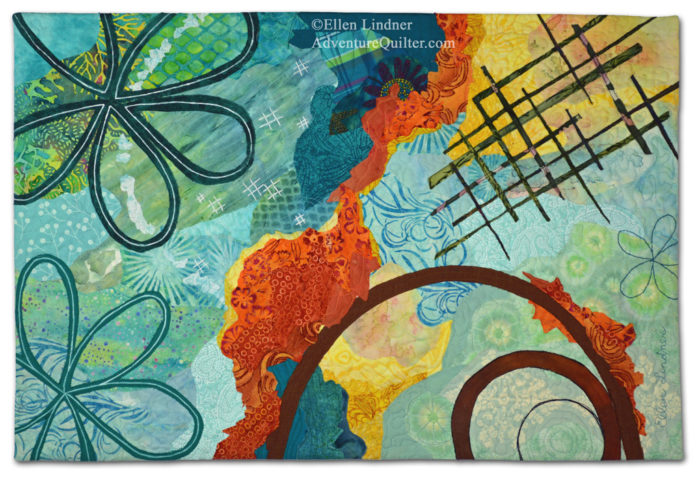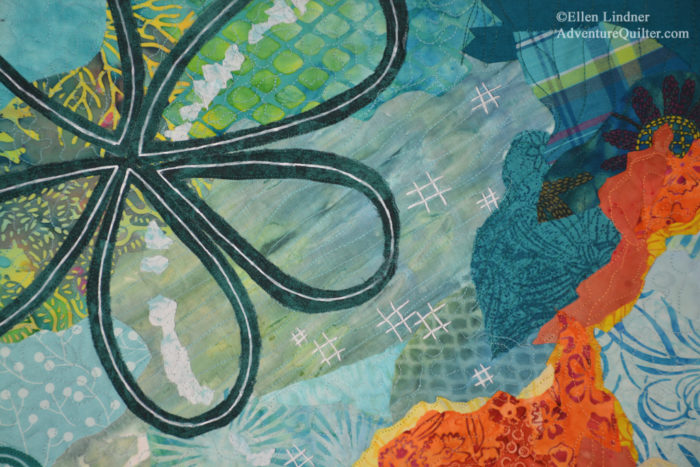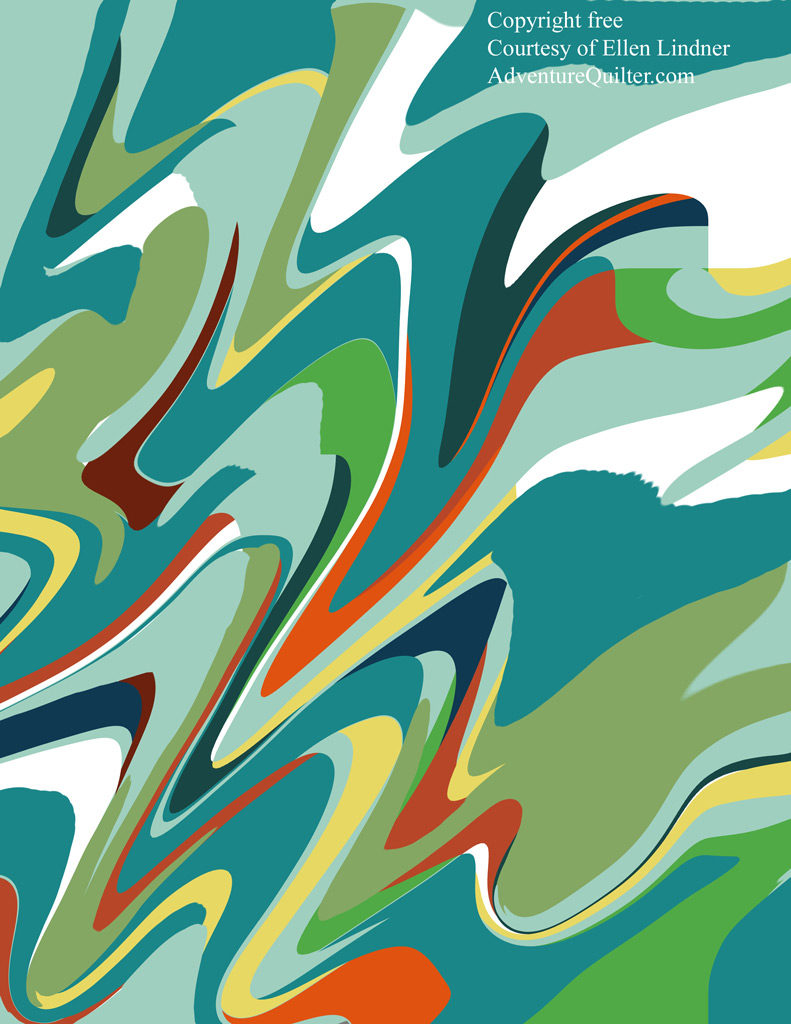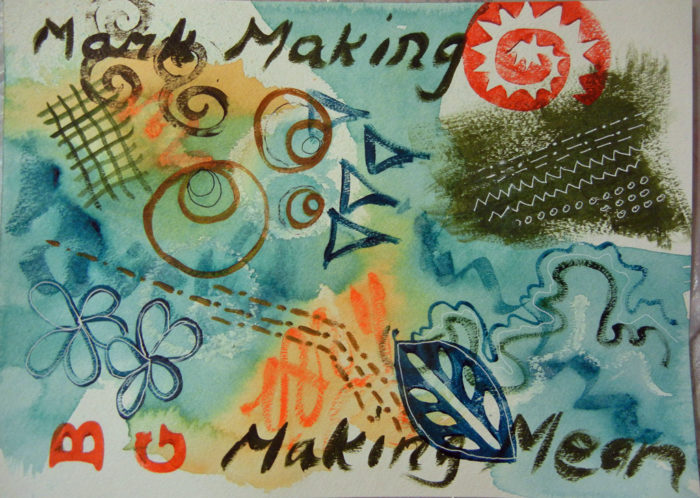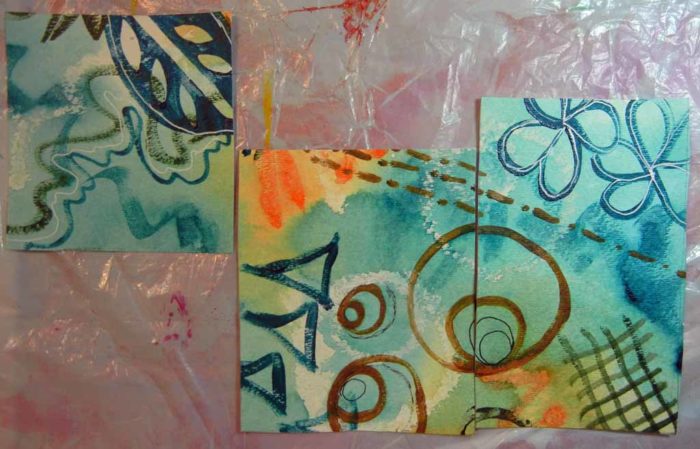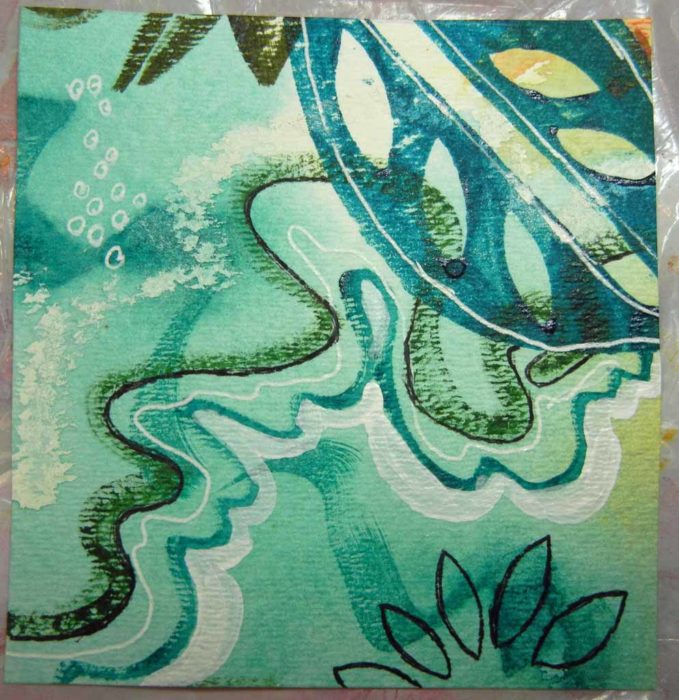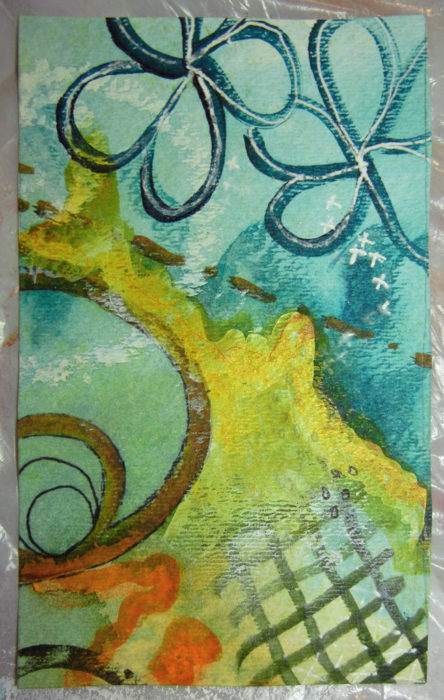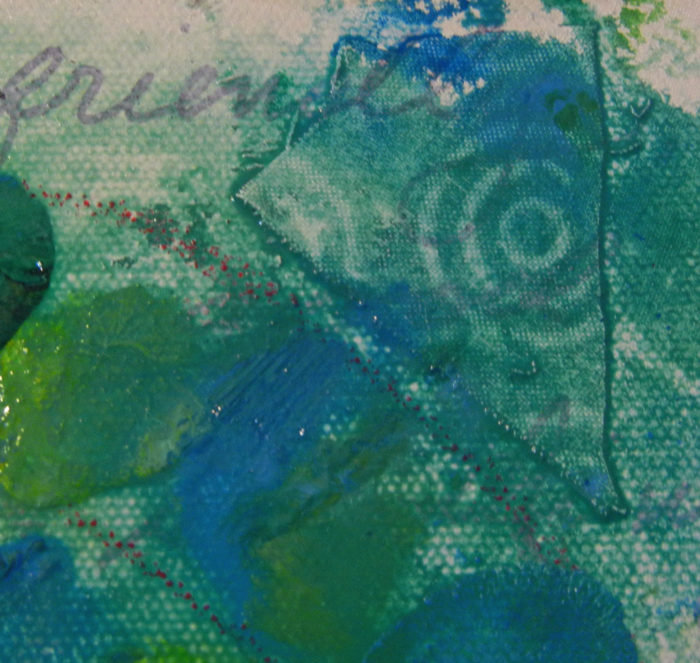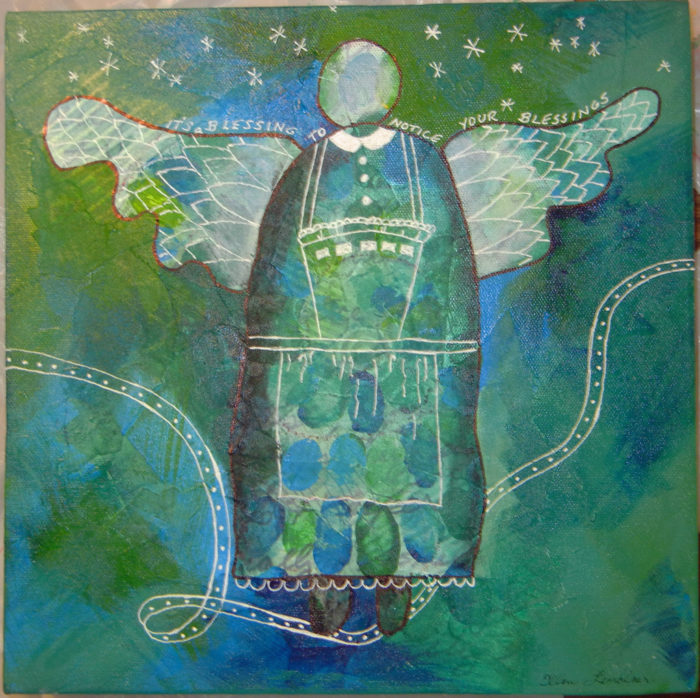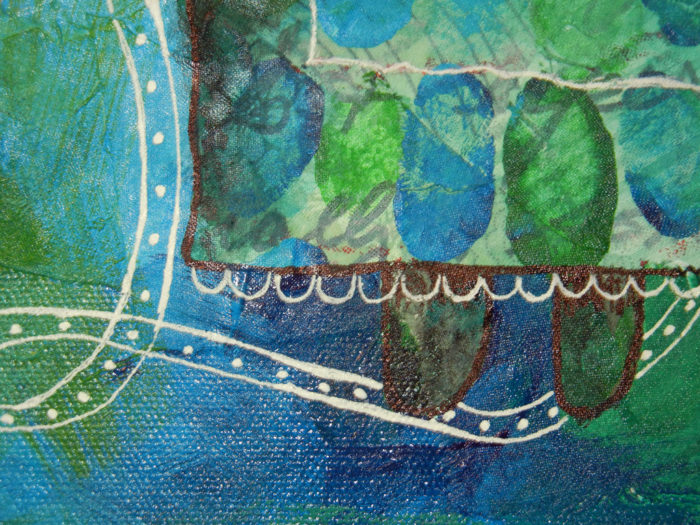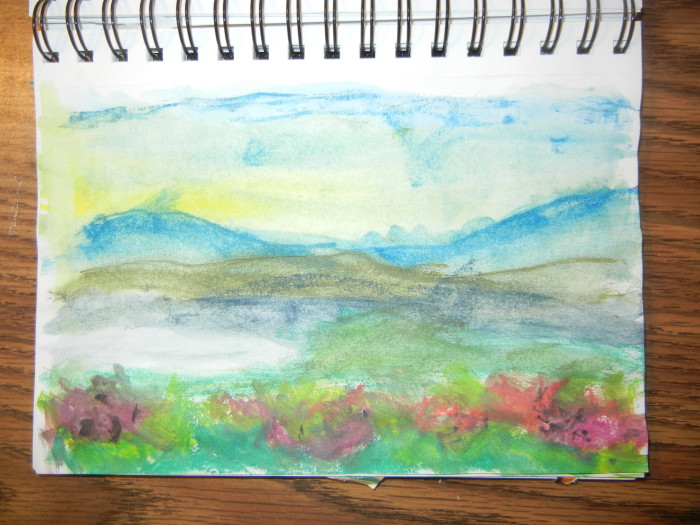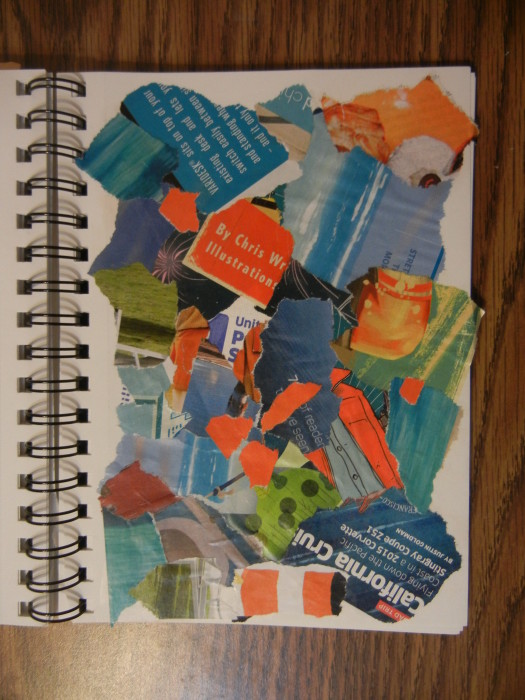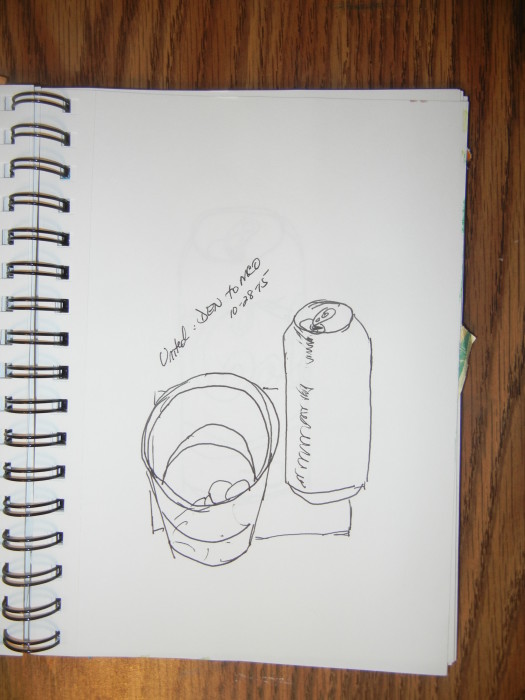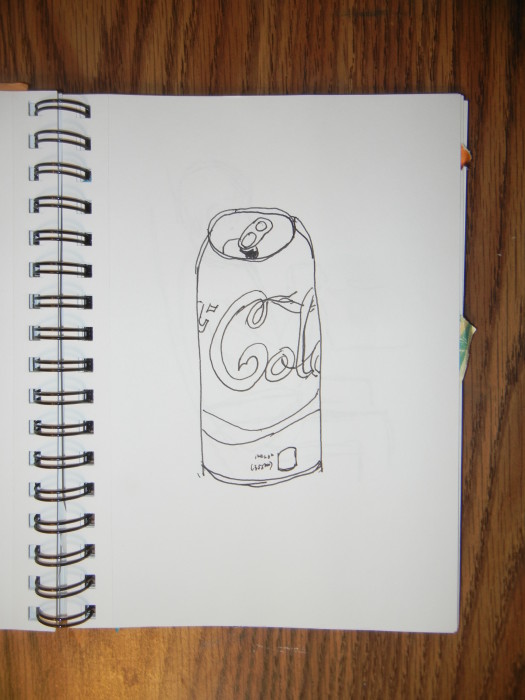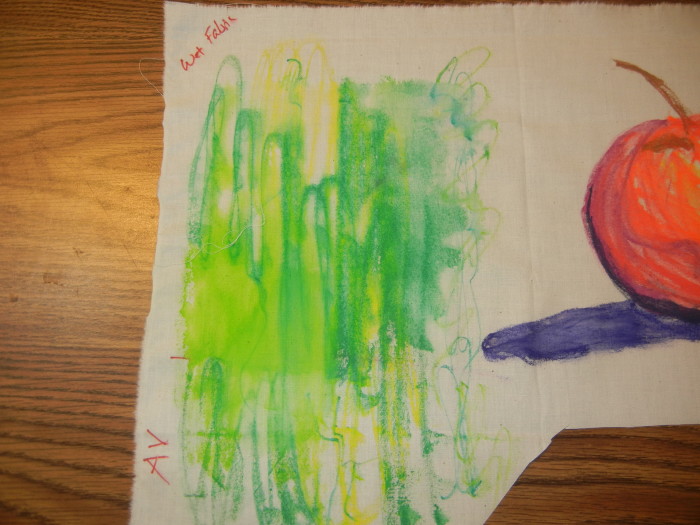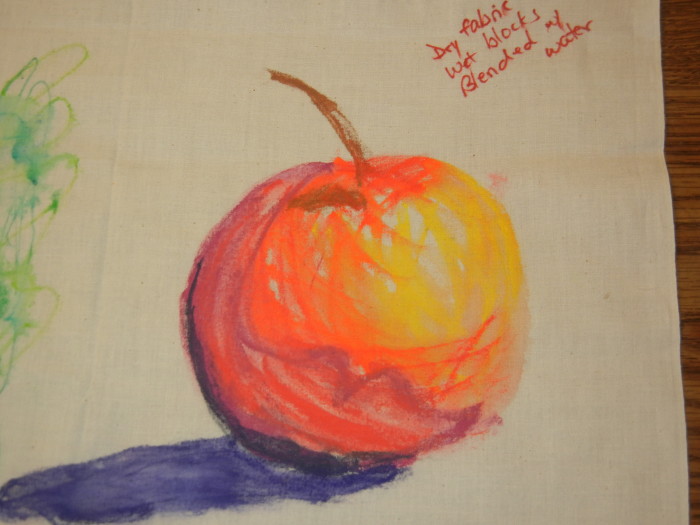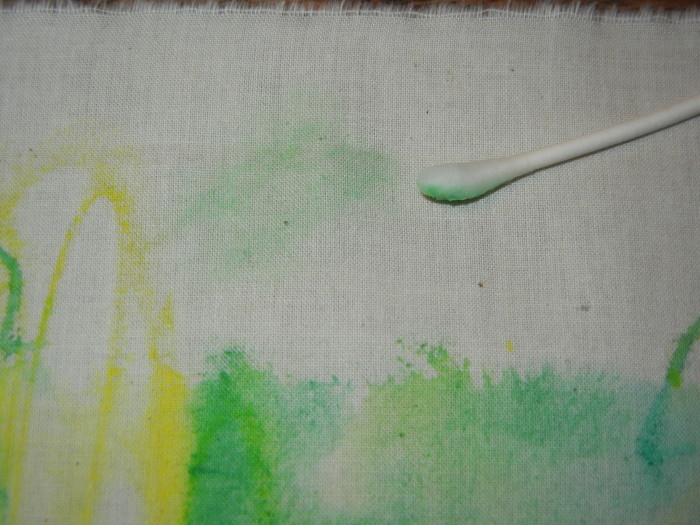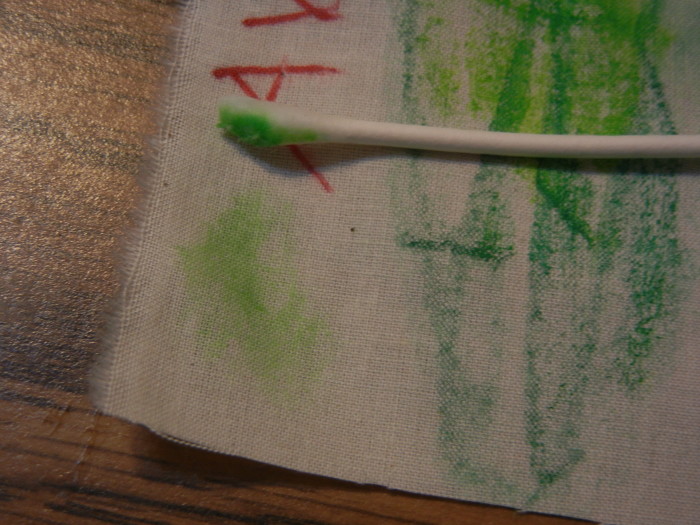After getting started on two big leaf quilts, things went pretty smoothly. (The photos in this post show the left quilt.) Having previously drawn the design on a large piece of muslin, I auditioned which green to use where.
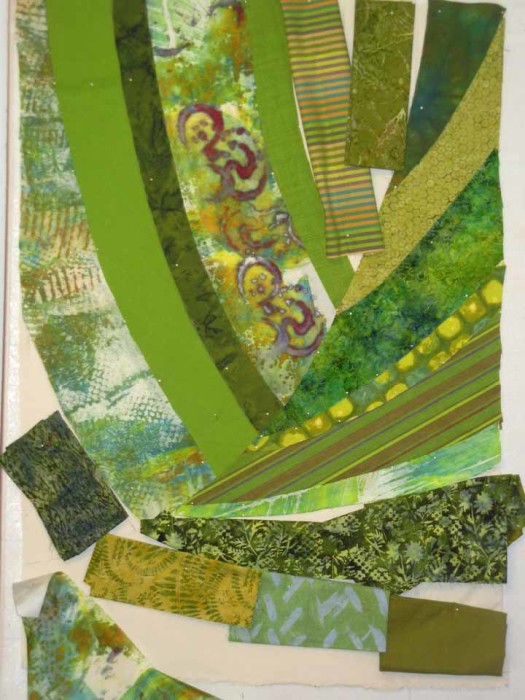
Can you believe I had to buy MORE fabric? Very unexpected.
Here’s the final arrangement of greens. Which ended up being not so final after all.
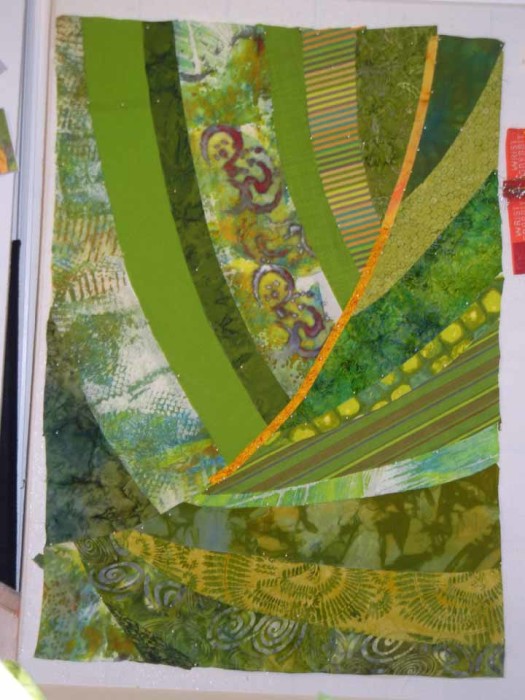
I was beginning to audition vein colors and widths. I loved the color above, but thought it was a little fat. More experimenting was needed.
In the photo below, I’ve changed some of the bottom right fabrics and I was continuing to add veins. I REALLY liked these colors!
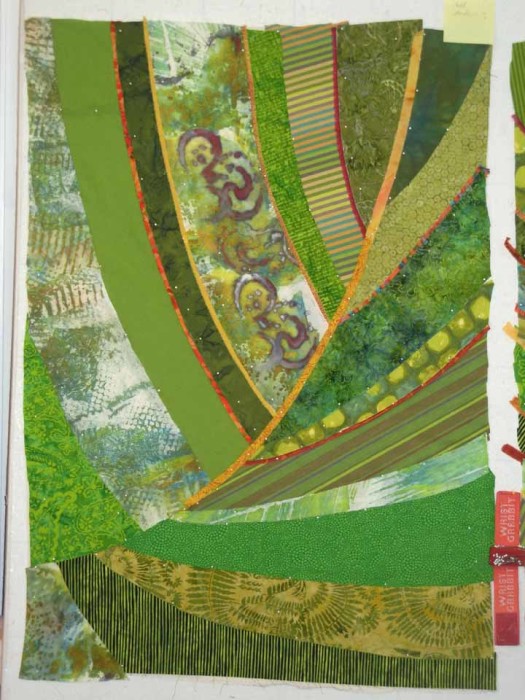
Here’s the final version, with veins complete. I was quite happy with it.
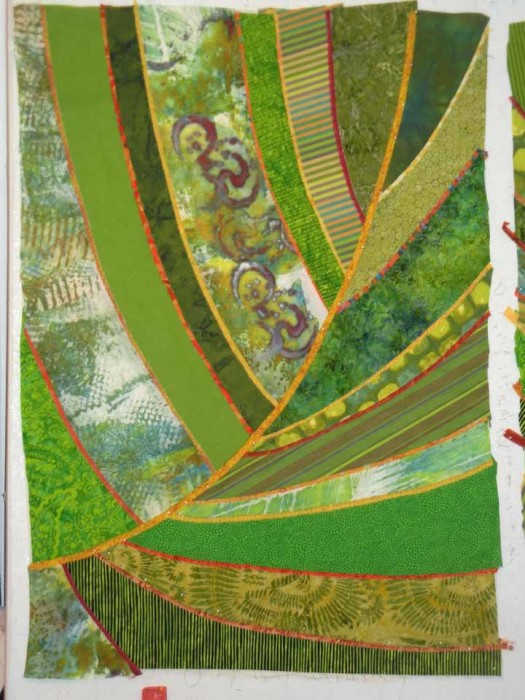
Then, I got to thinking about adding shadows to make the veins looked raised. I did a little experimenting and decided to do this with two layers of black tulle.
I covered the entire quilt with the tulle (2 layers.) Next, I decided on the light source and did some crazy calculating (and guessing) to determine the correct width of the shadow at each location. I drew in the shadow dimensions and stitched them with dark monofilament thread. Finally, I cut away the extra tulle.
In the photo below the entire quilt has tulle on it. I’ve stitched the first few shadow lines, on the right. allowing me to cut away the tulle in those areas. I was pleased to see that it was developing as I had hoped.

In the next photo, the left side is still covered with tulle and the right has had the shadows completed.
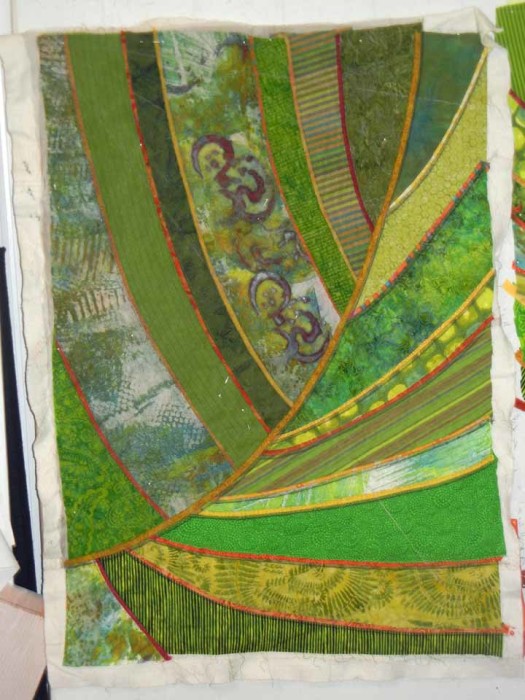
And here it is finished.
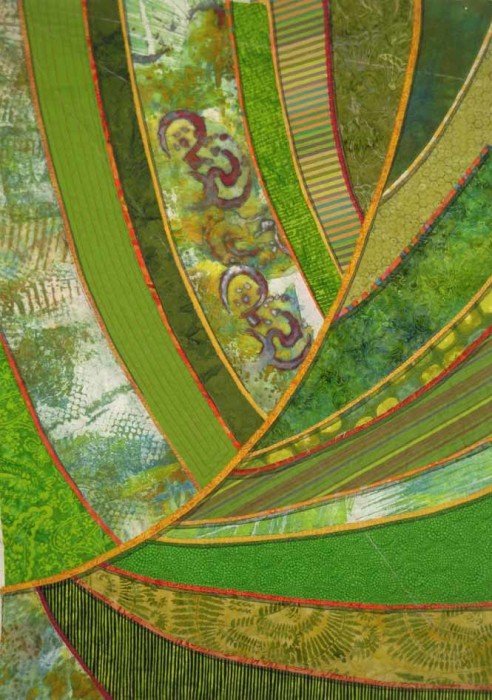
I think the shadow effect worked perfectly. What do you think?
Want to see it up close? I know you do, so here it is.
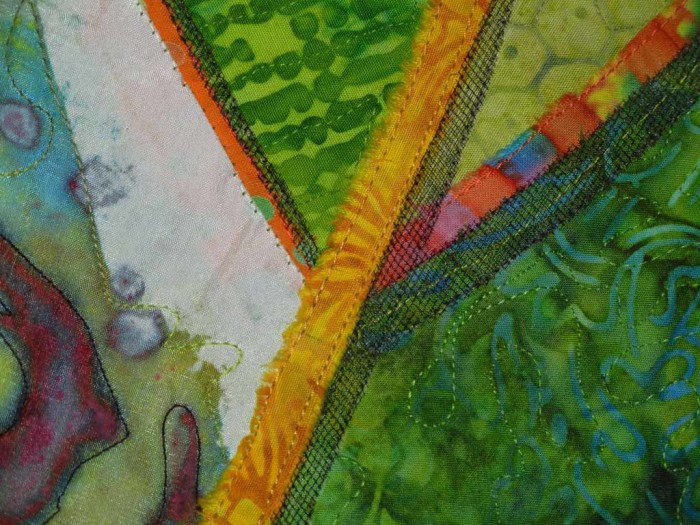
I think I might use clear thread next time.
The left quilt is now almost complete. I’ll wait to trim and face it until the second quilt is finished, so I can make sure they’re the same size.
BTW, I’ve used tulle to add a shadow, or to change a color many other times. See several examples on this page.
– Misty Morn required four layers of black tulle to create the shadows in the foreground.
– Blue tulle was used to created the shadows on the oranges in Lakeside Citrus.
– Black oraganza (more opaque than tulle) was used for the berry shadows in Ripening.
– Two layers of black tulle created the border for Autumn Breeze. Can you see how the interior image continues right into the border?
TIP: Using tulle in this way is very easy.
– Start with a piece significantly larger than needed. Pin well.
– Stitch along desired lines.
– Trim closely.
Because tulle is extruded plastic it will not ravel! (Other woven sheers generally ravel very badly.)
Have you ever used tulle to alter a color?
Ellen Lindner
